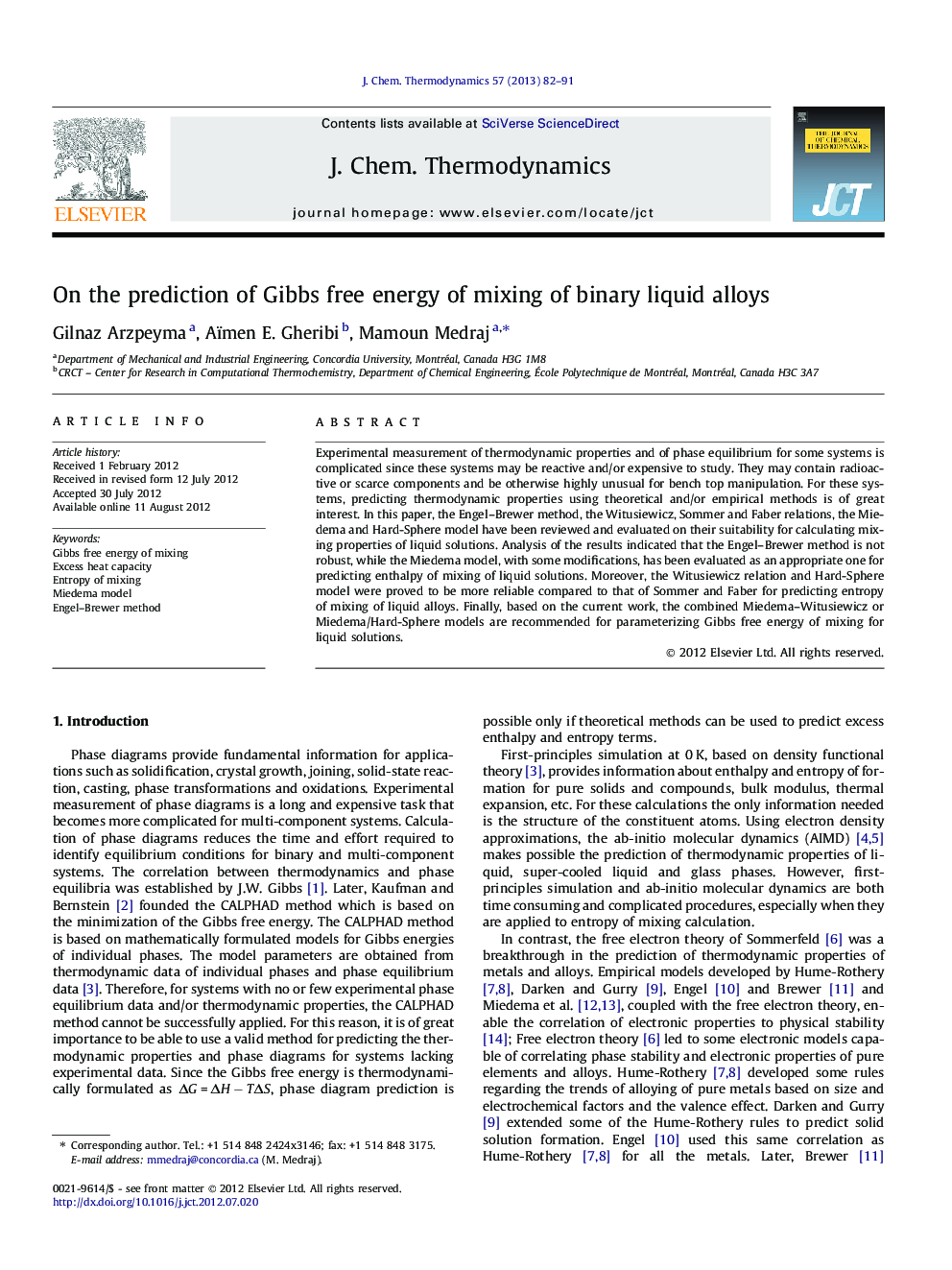| Article ID | Journal | Published Year | Pages | File Type |
|---|---|---|---|---|
| 215739 | The Journal of Chemical Thermodynamics | 2013 | 10 Pages |
Experimental measurement of thermodynamic properties and of phase equilibrium for some systems is complicated since these systems may be reactive and/or expensive to study. They may contain radioactive or scarce components and be otherwise highly unusual for bench top manipulation. For these systems, predicting thermodynamic properties using theoretical and/or empirical methods is of great interest. In this paper, the Engel–Brewer method, the Witusiewicz, Sommer and Faber relations, the Miedema and Hard-Sphere model have been reviewed and evaluated on their suitability for calculating mixing properties of liquid solutions. Analysis of the results indicated that the Engel–Brewer method is not robust, while the Miedema model, with some modifications, has been evaluated as an appropriate one for predicting enthalpy of mixing of liquid solutions. Moreover, the Witusiewicz relation and Hard-Sphere model were proved to be more reliable compared to that of Sommer and Faber for predicting entropy of mixing of liquid alloys. Finally, based on the current work, the combined Miedema–Witusiewicz or Miedema/Hard-Sphere models are recommended for parameterizing Gibbs free energy of mixing for liquid solutions.
► Analytical approaches for predicting excess enthalpy, entropy and heat capacity are evaluated in this work. ► Application of Engel–Brewer method is found as not appropriate even for transition metals and actinides. ► Wituciewicz relation and Hard-Sphere model are proved to be successful in predicting entropy of mixing of liquid alloys. ► A Combined Miedema–Wituciewicz or Miedema–Hard-Sphere model is proposed to calculate Gibbs free energy of liquid alloys.
